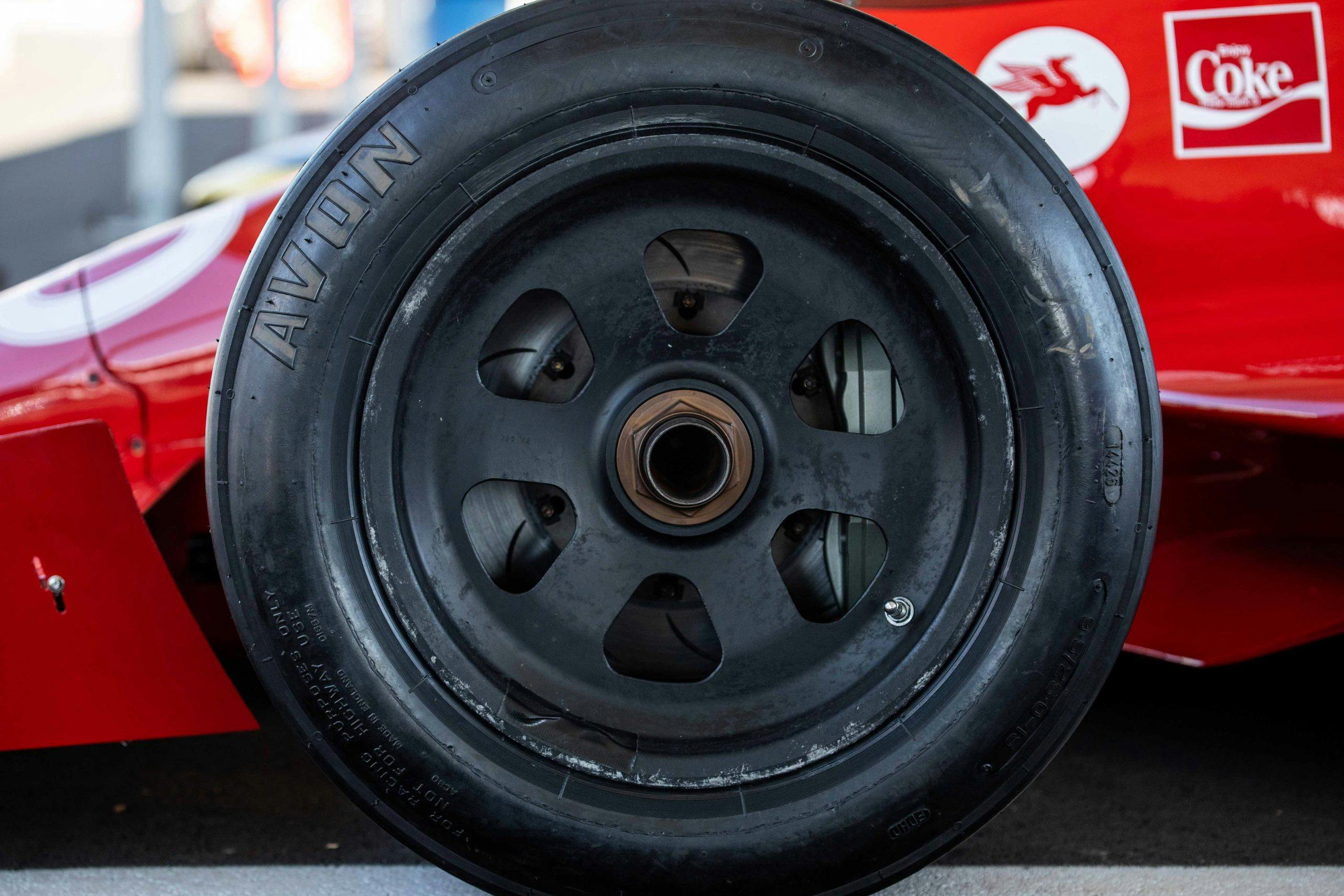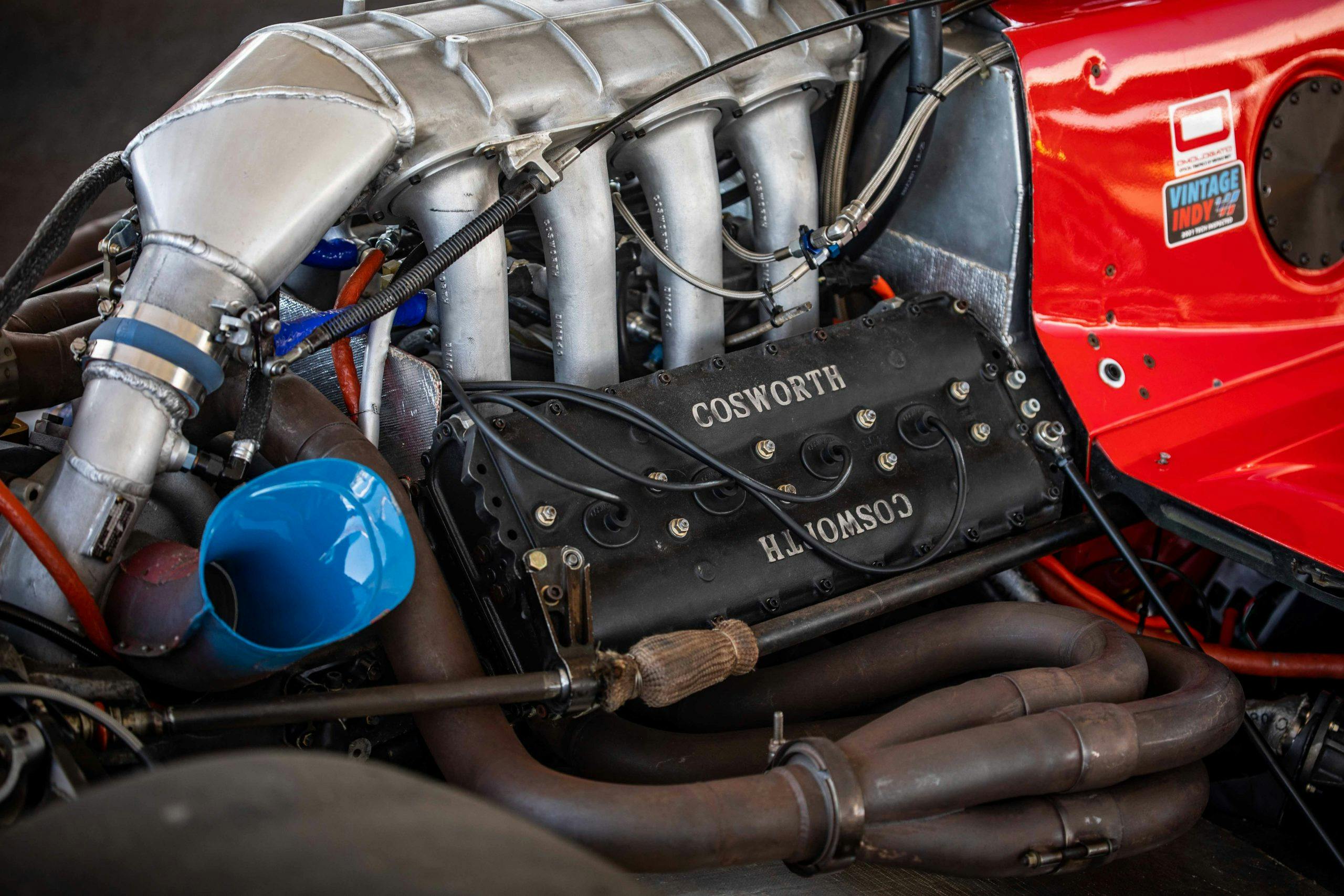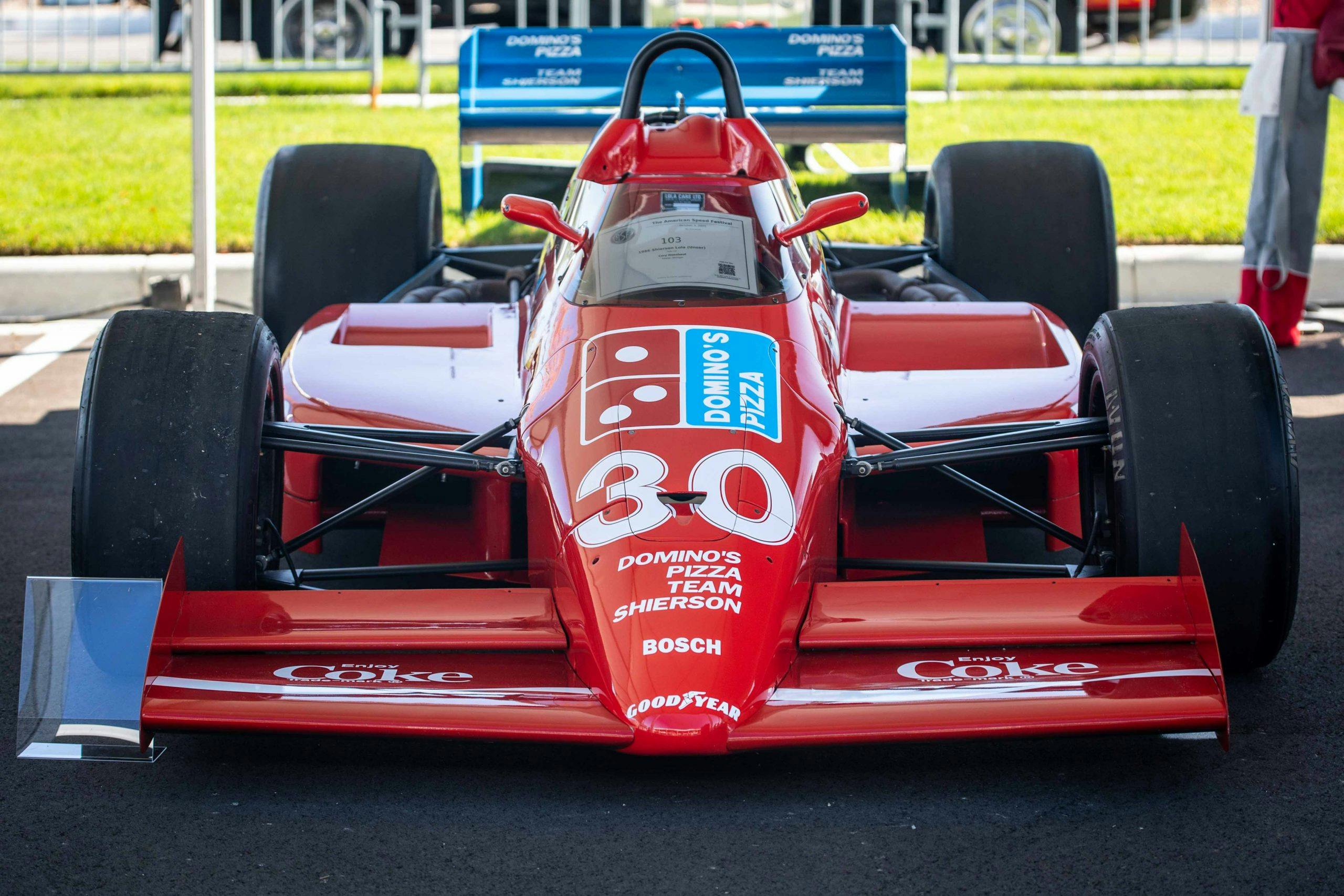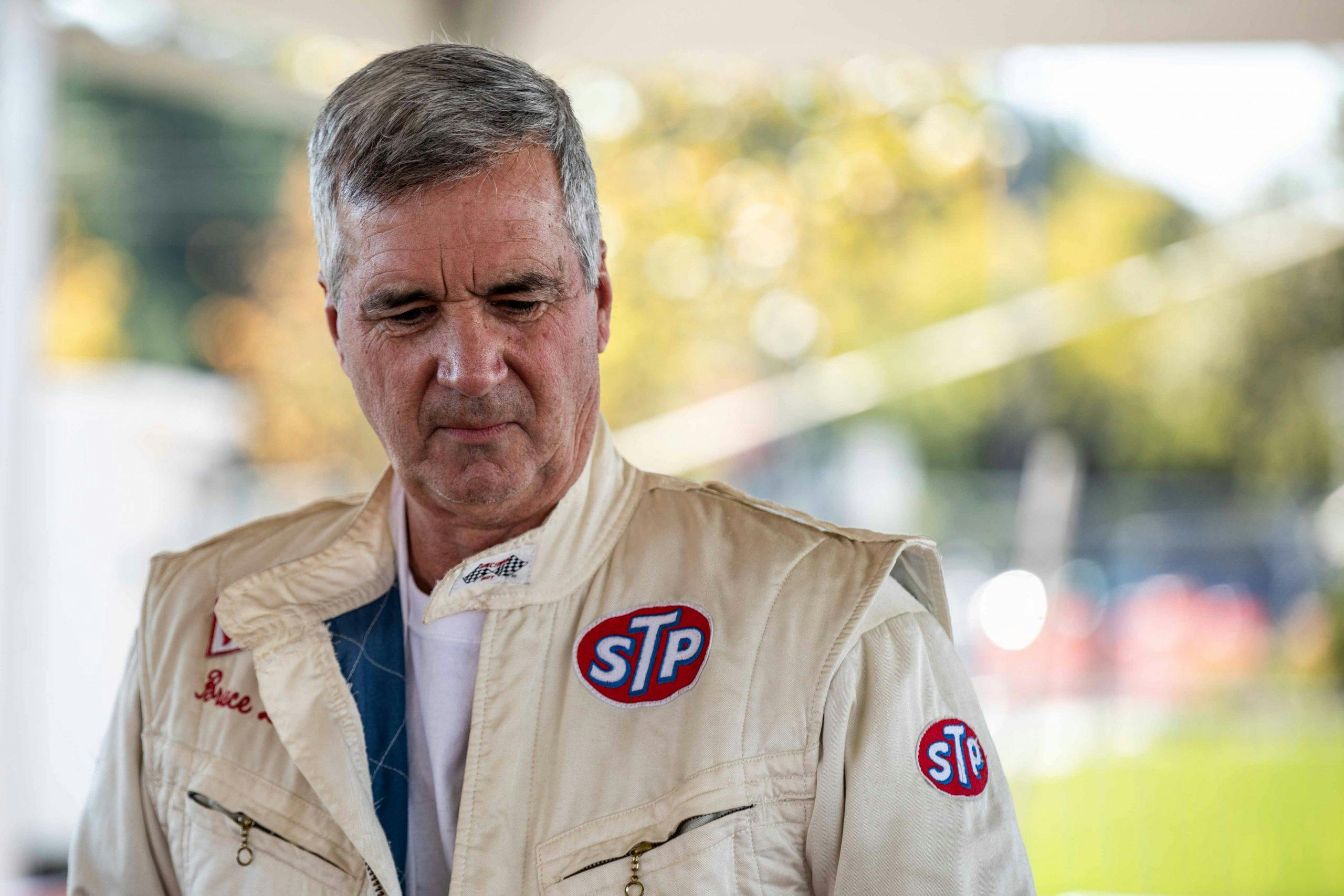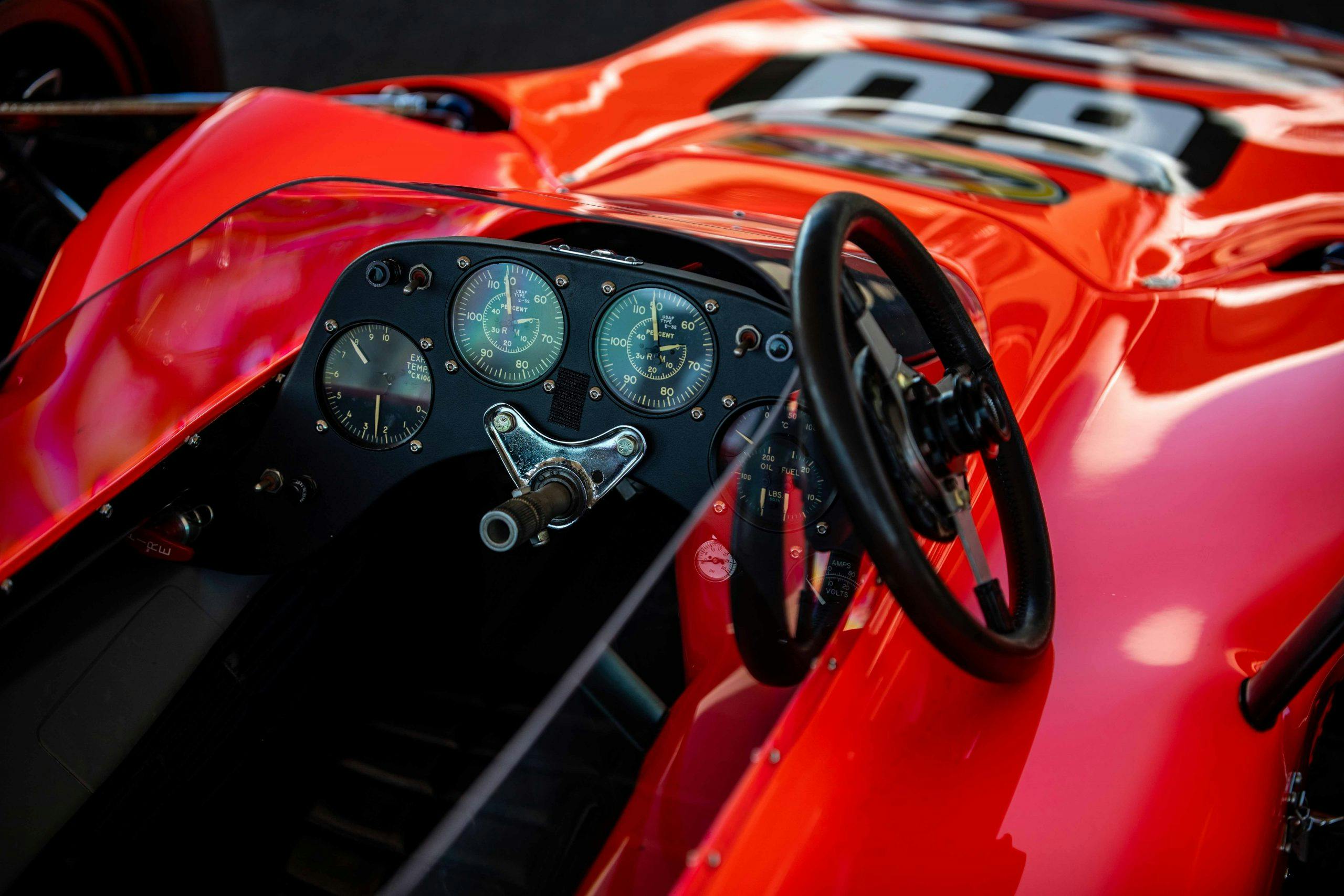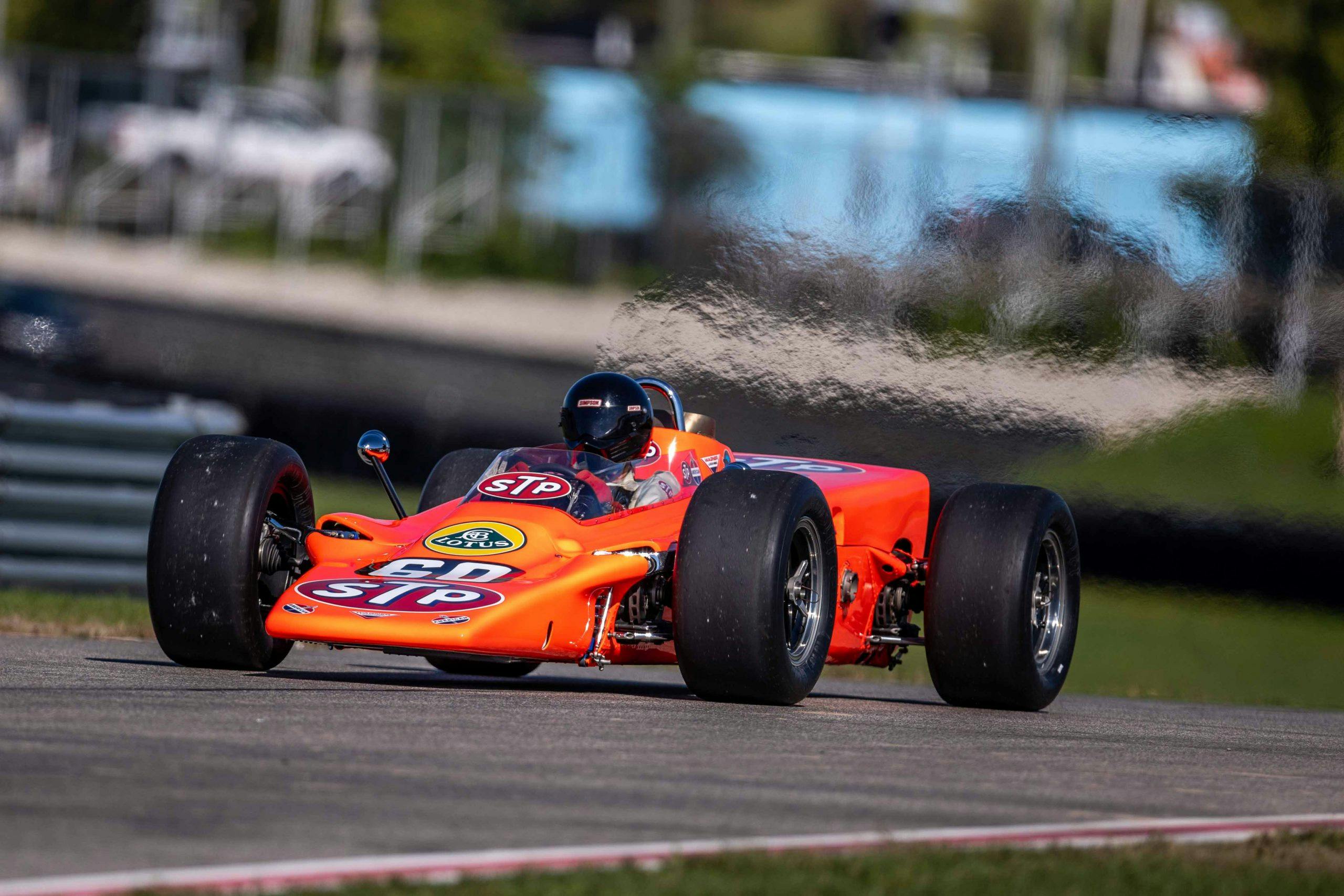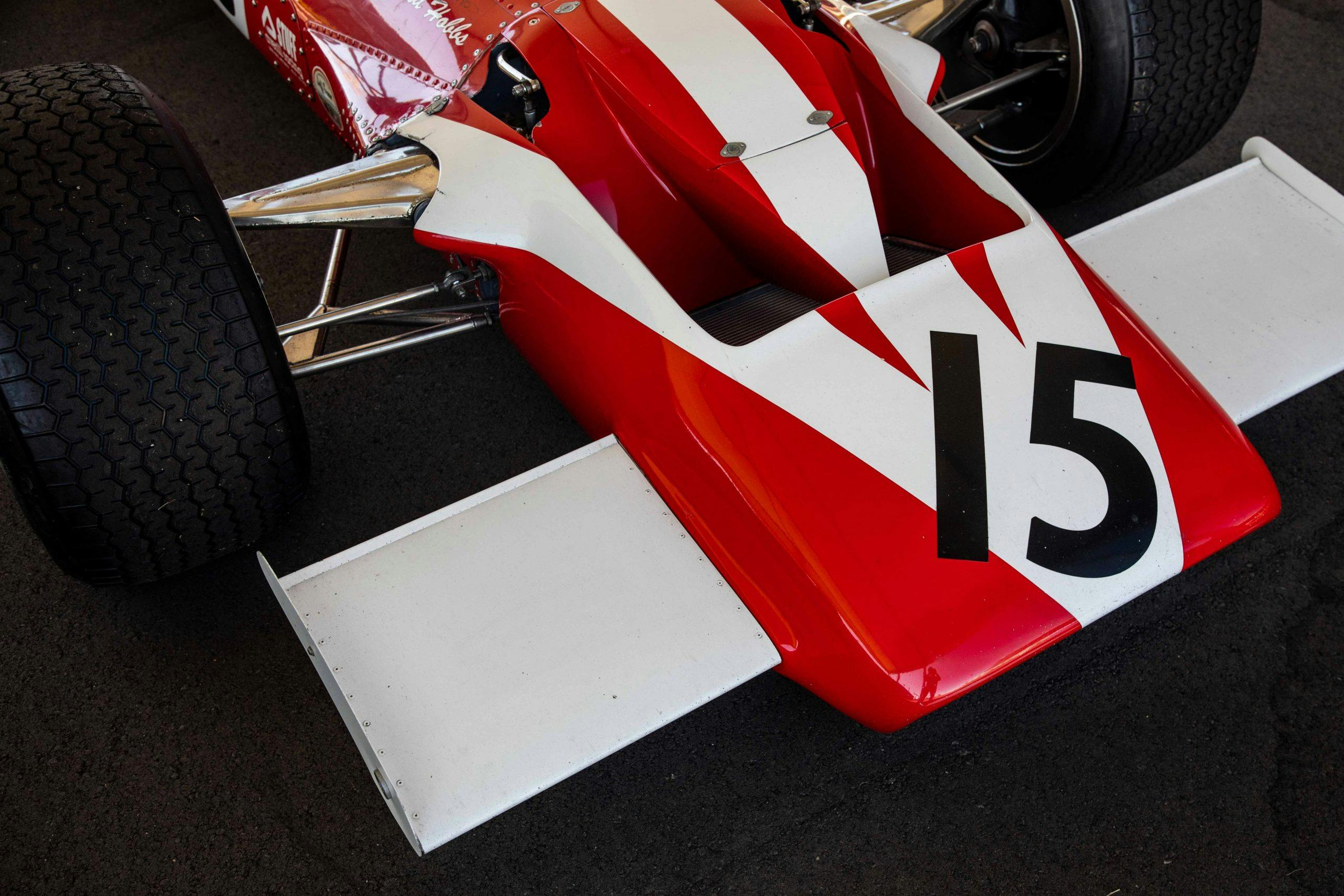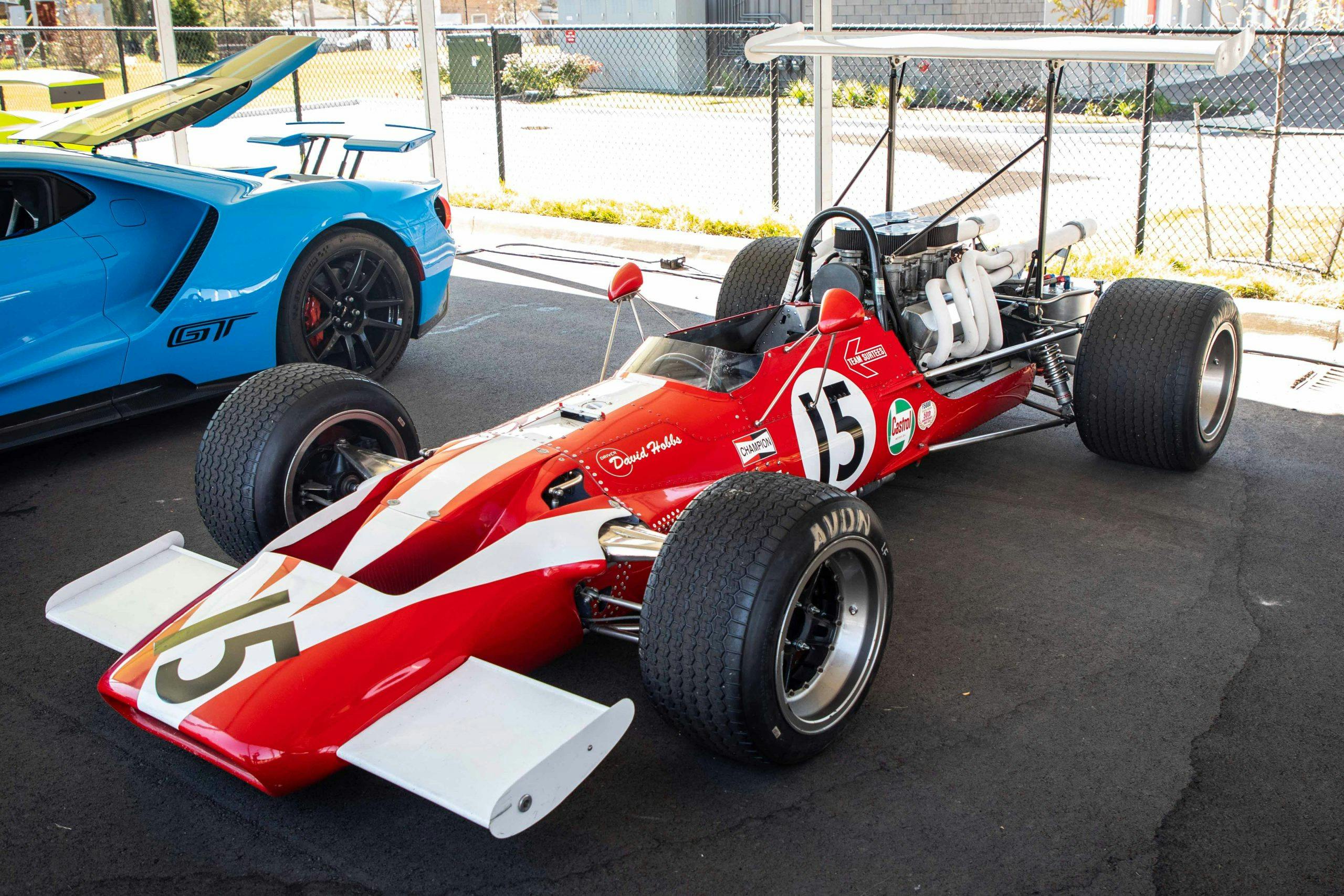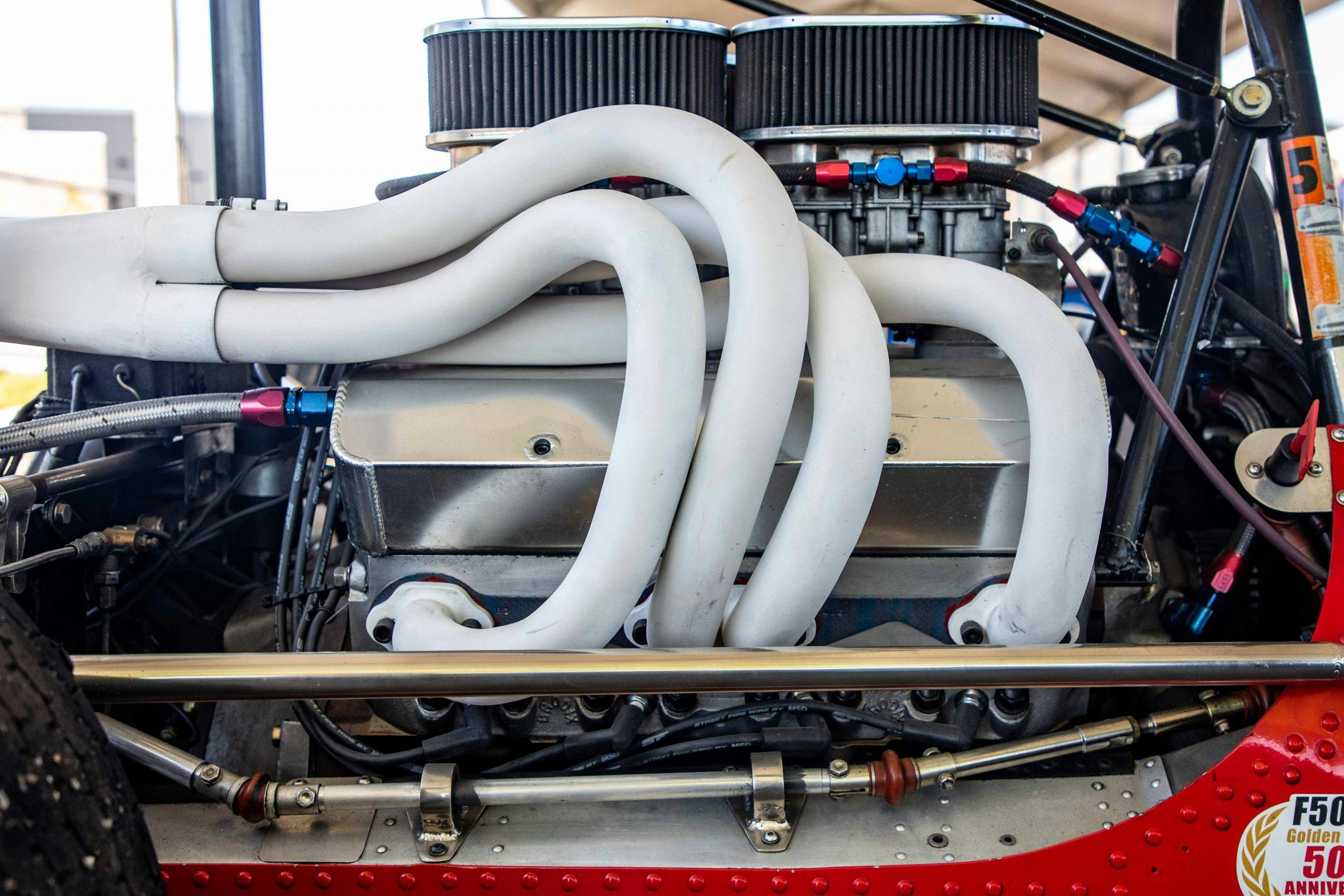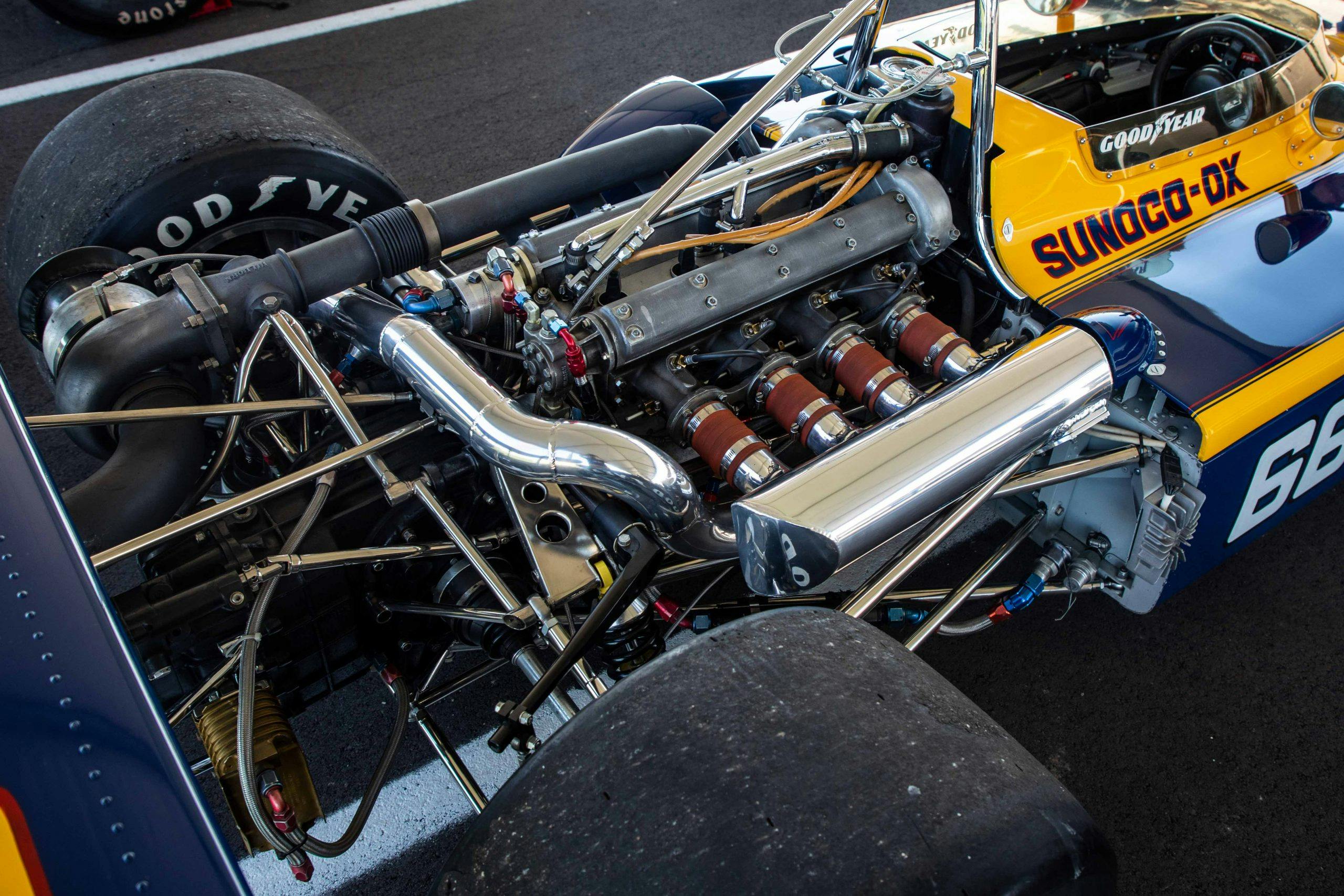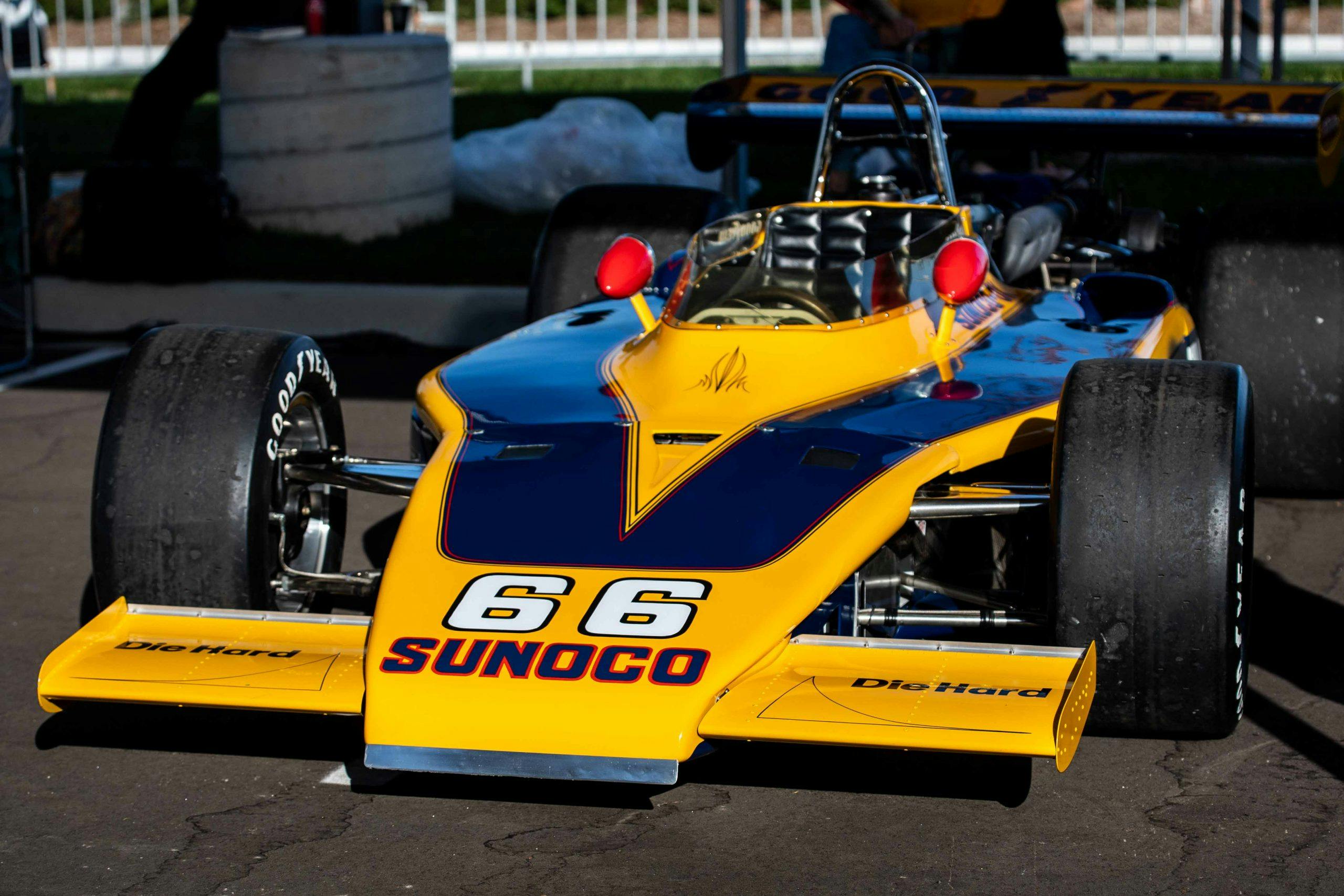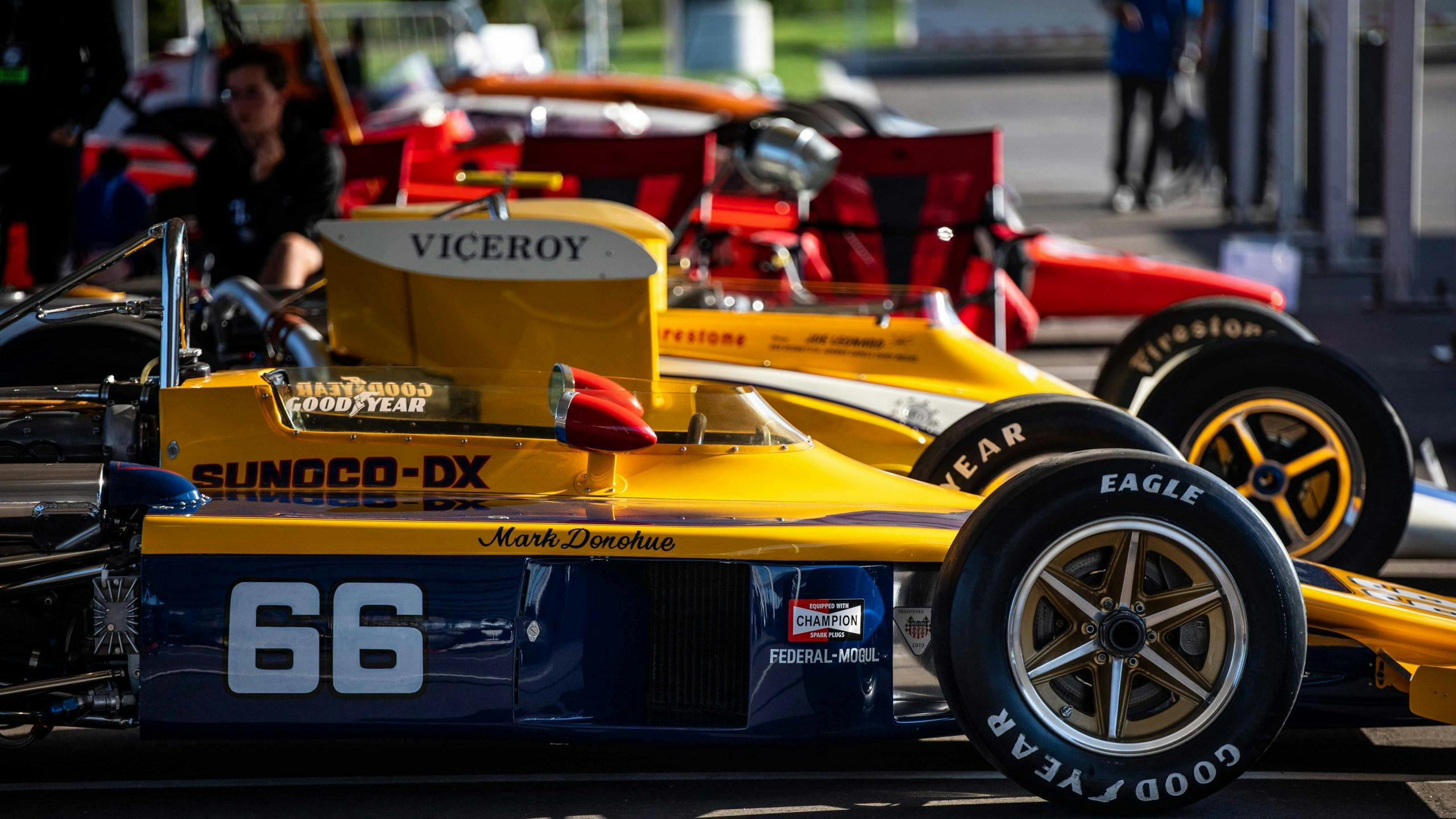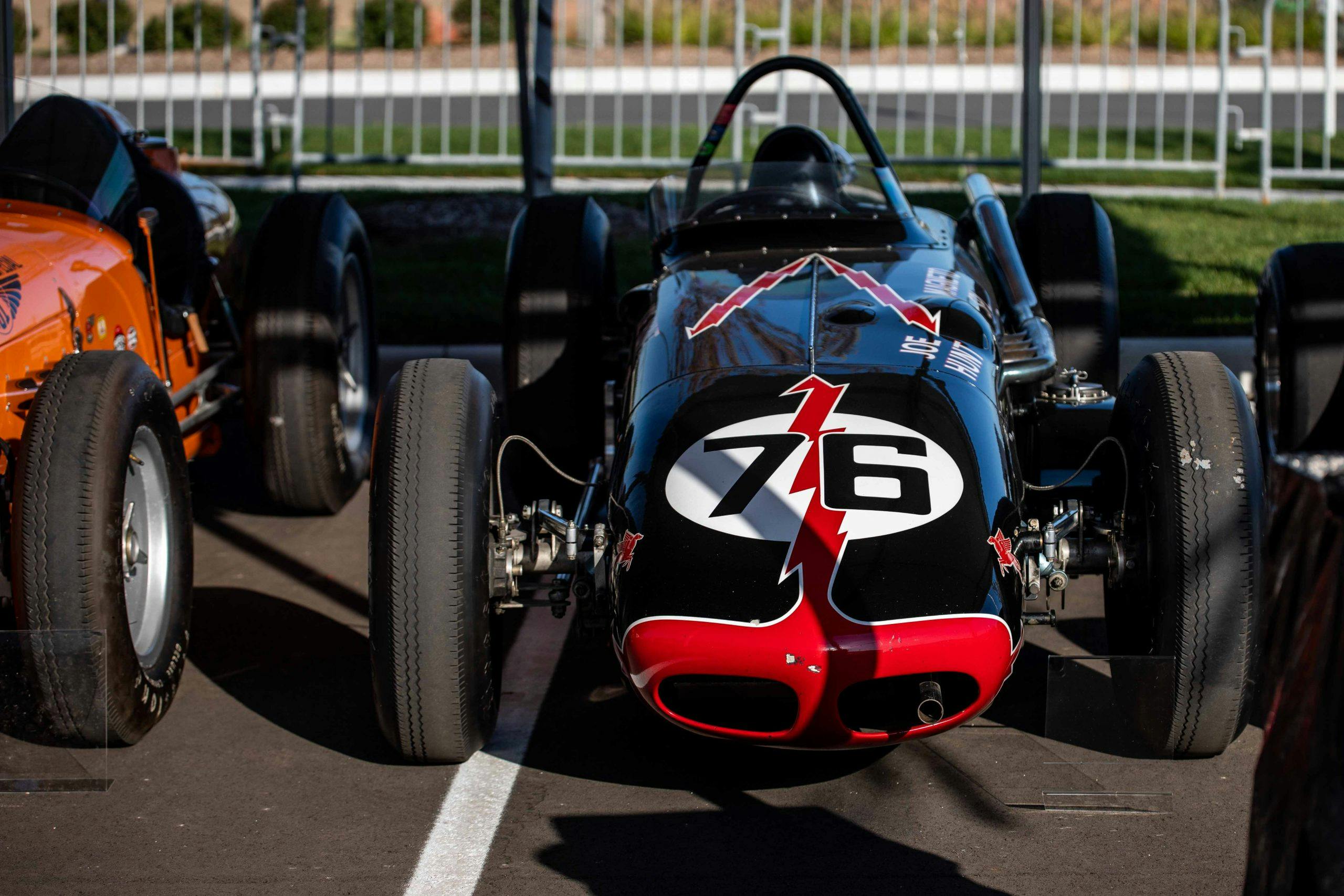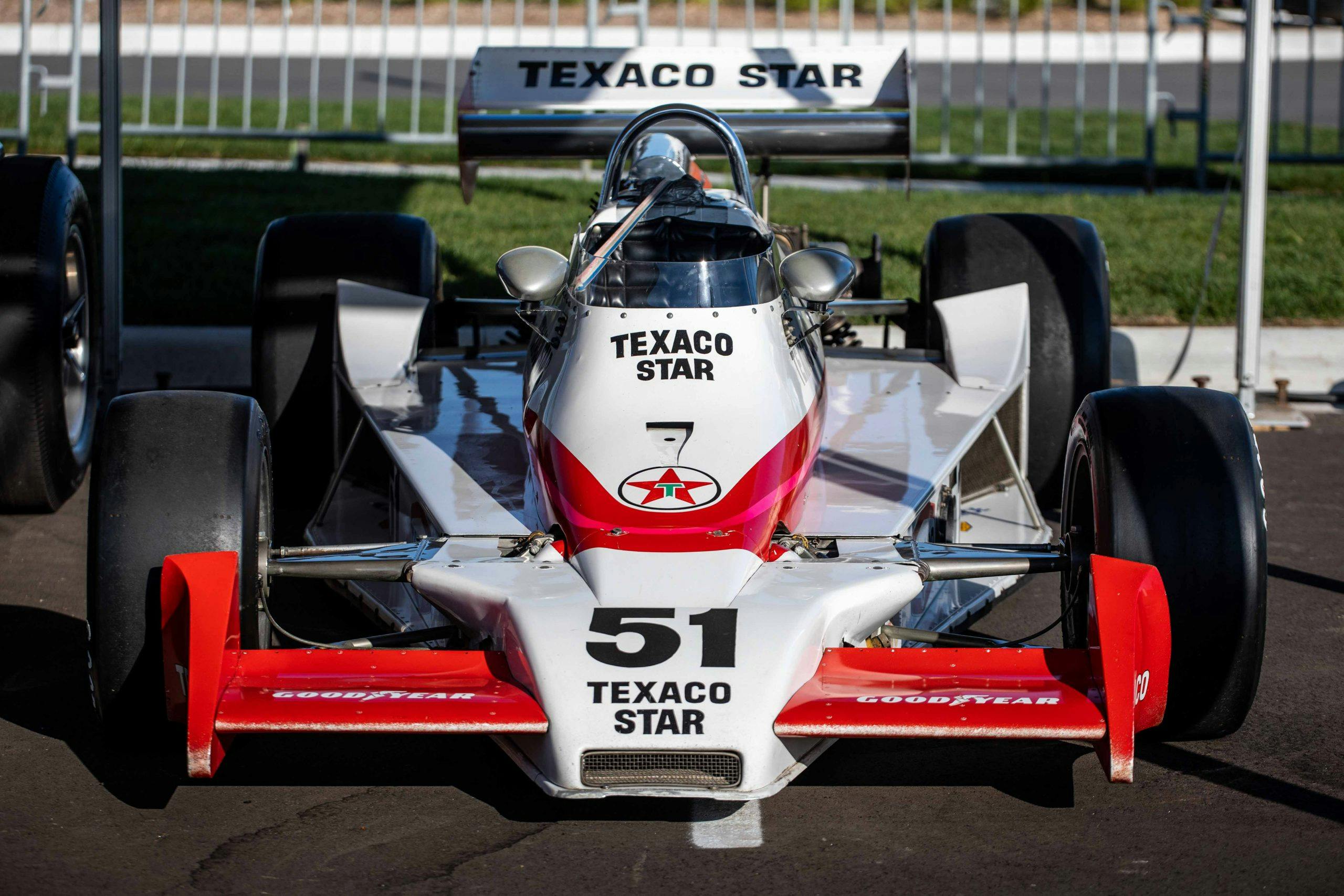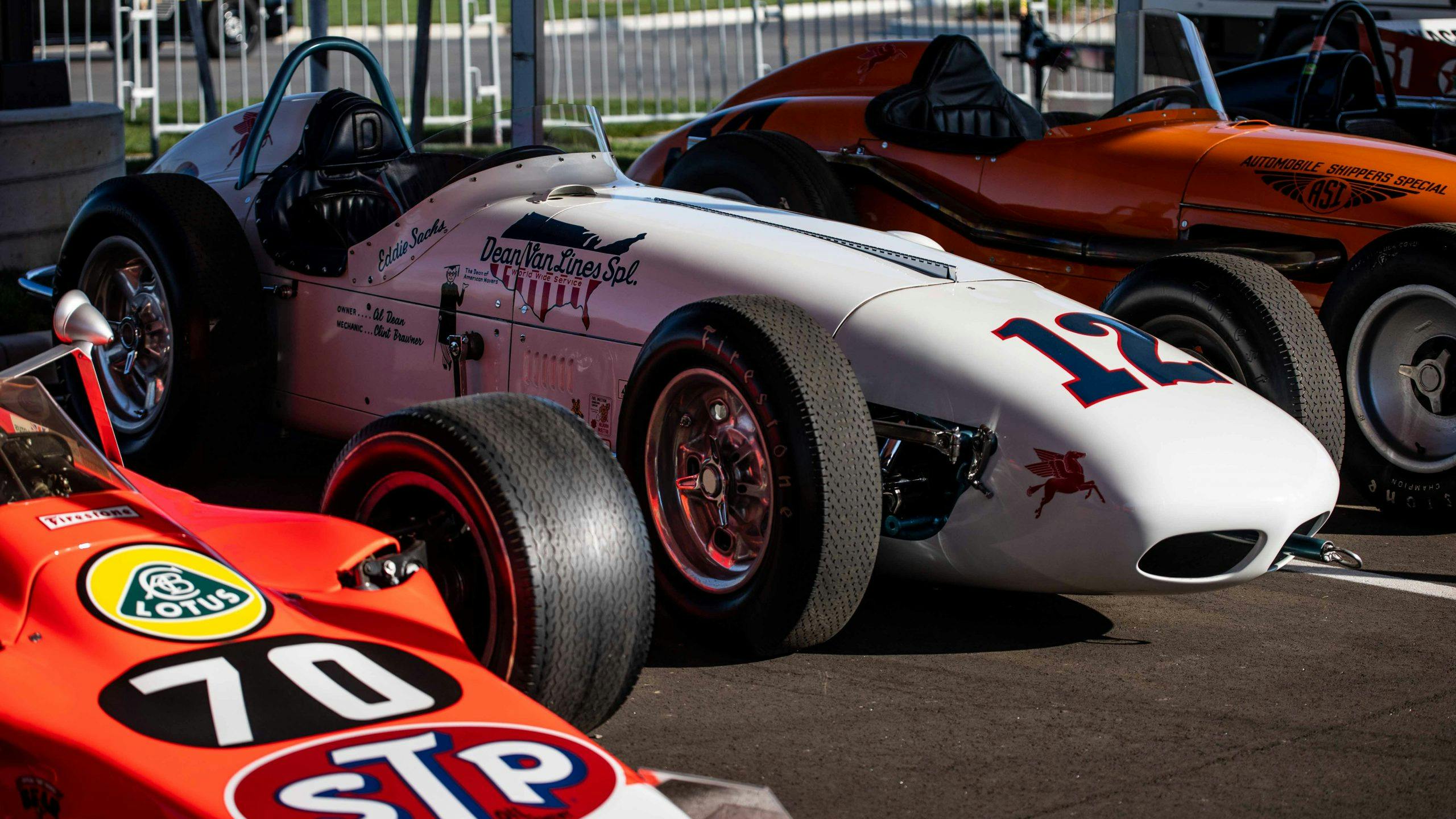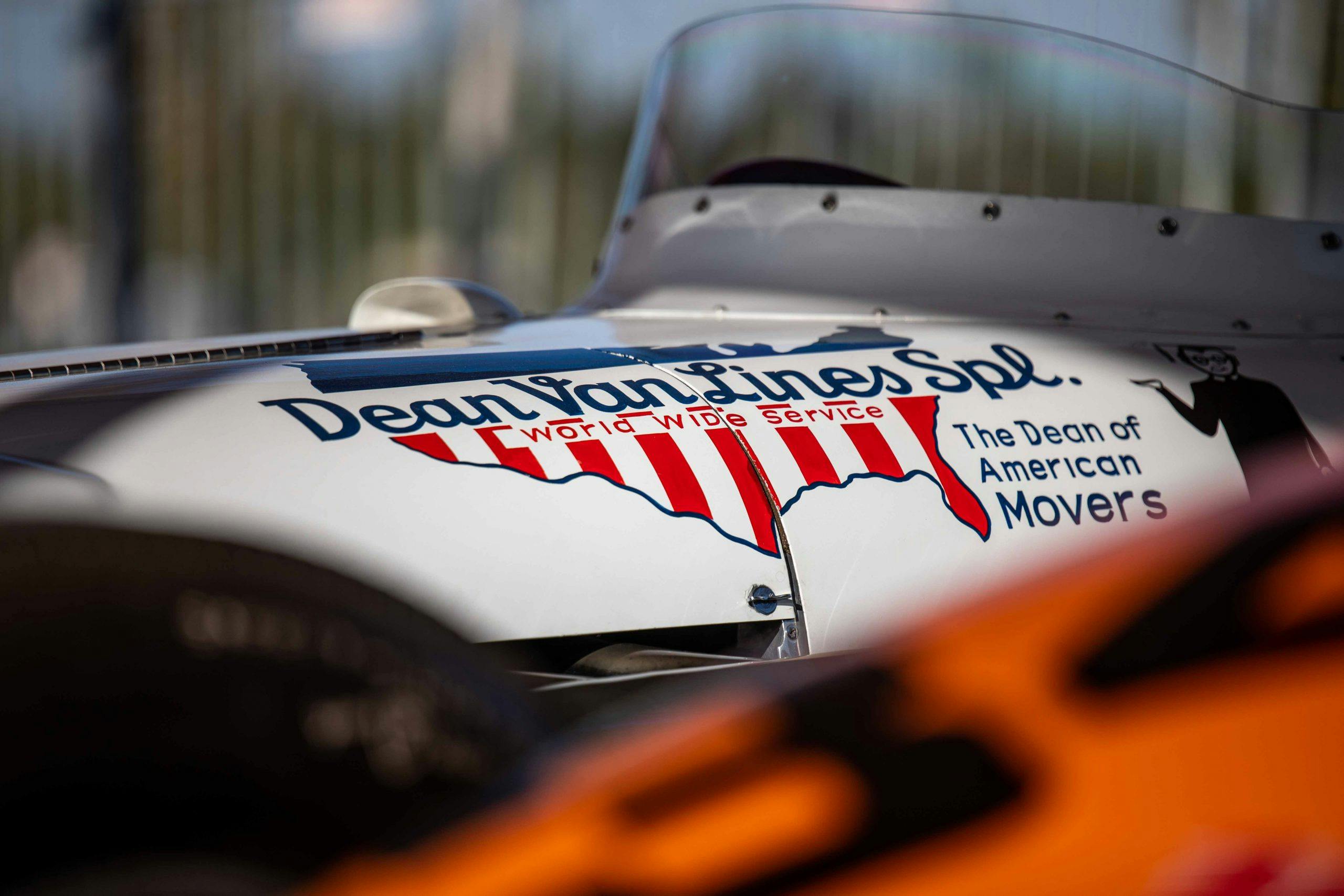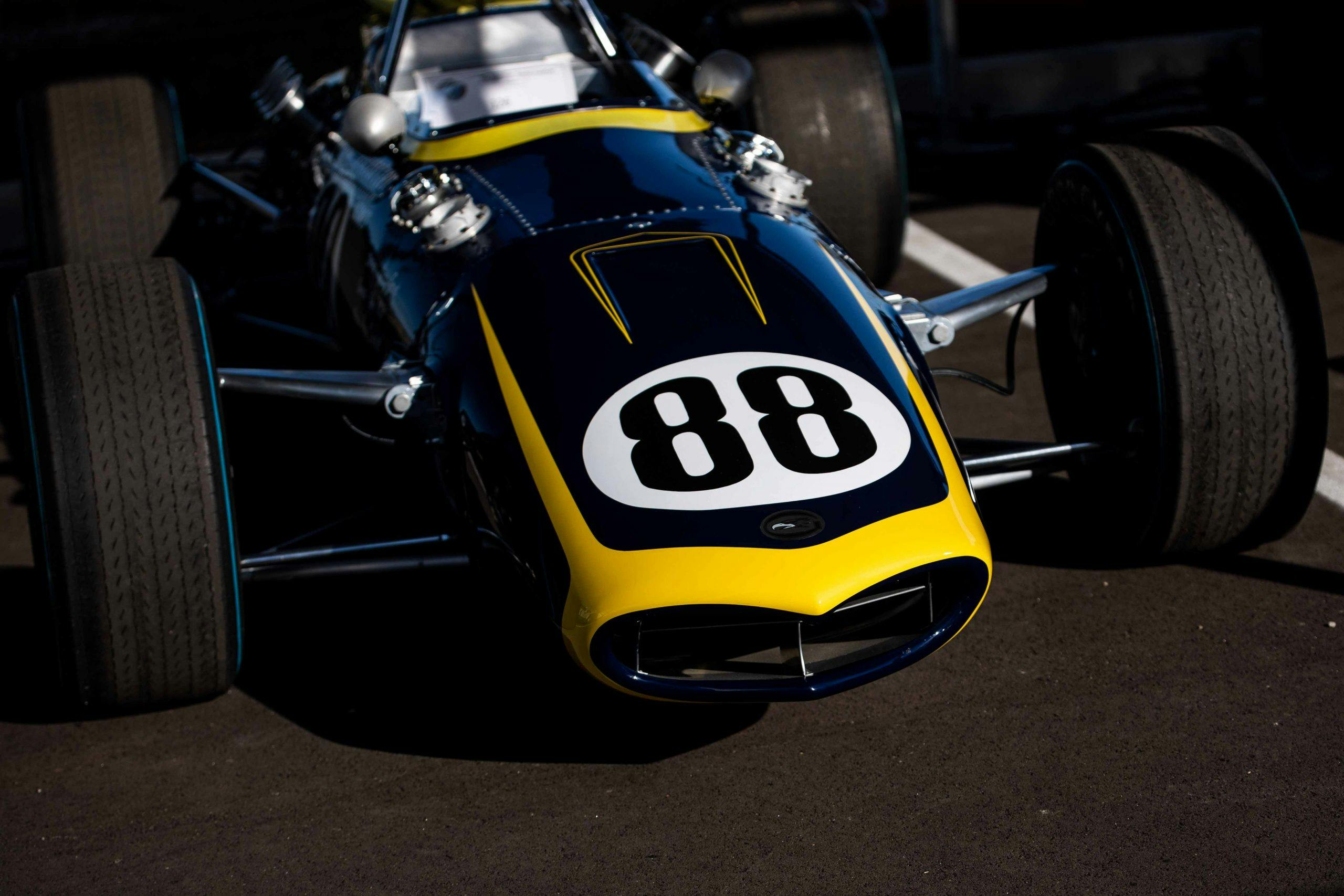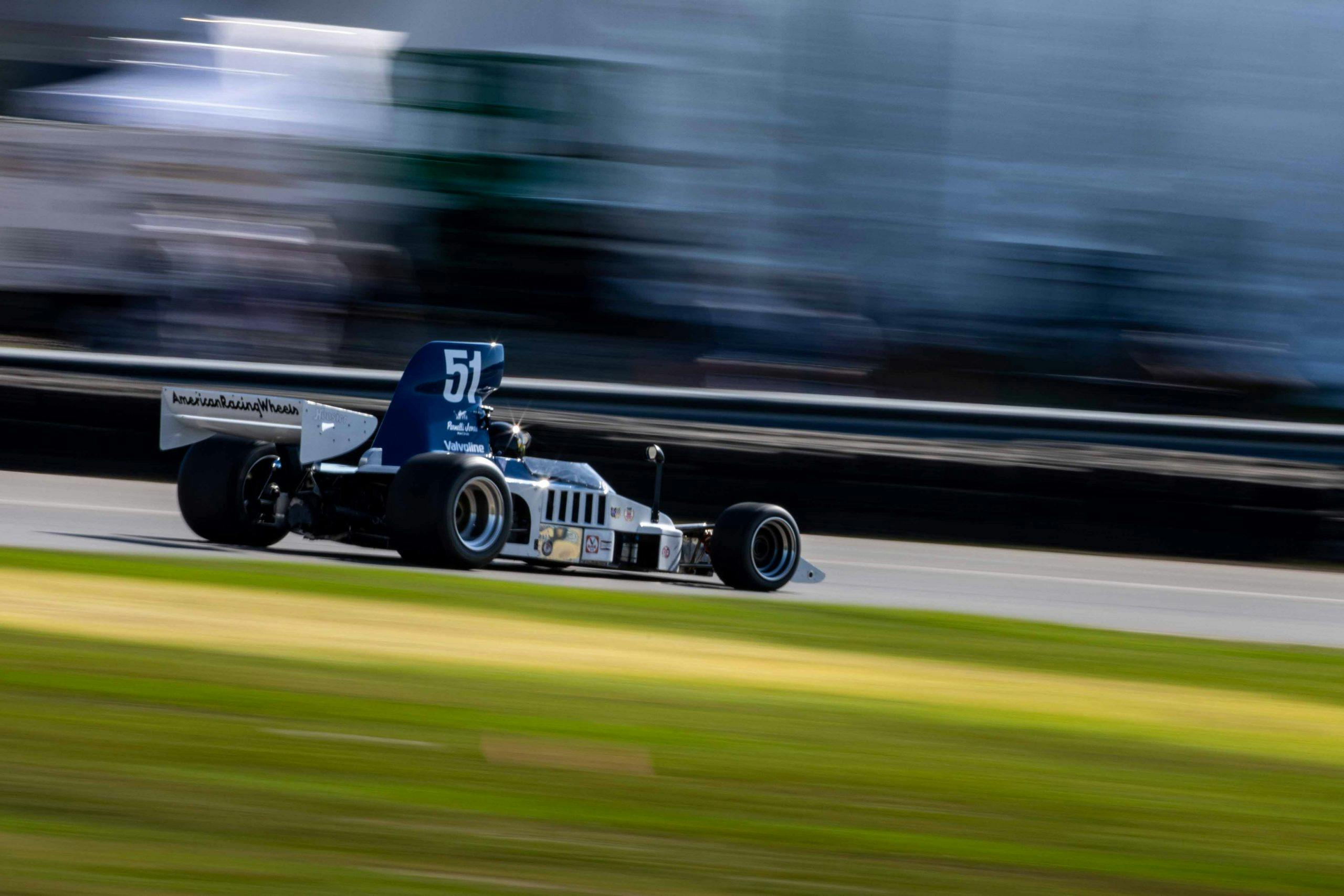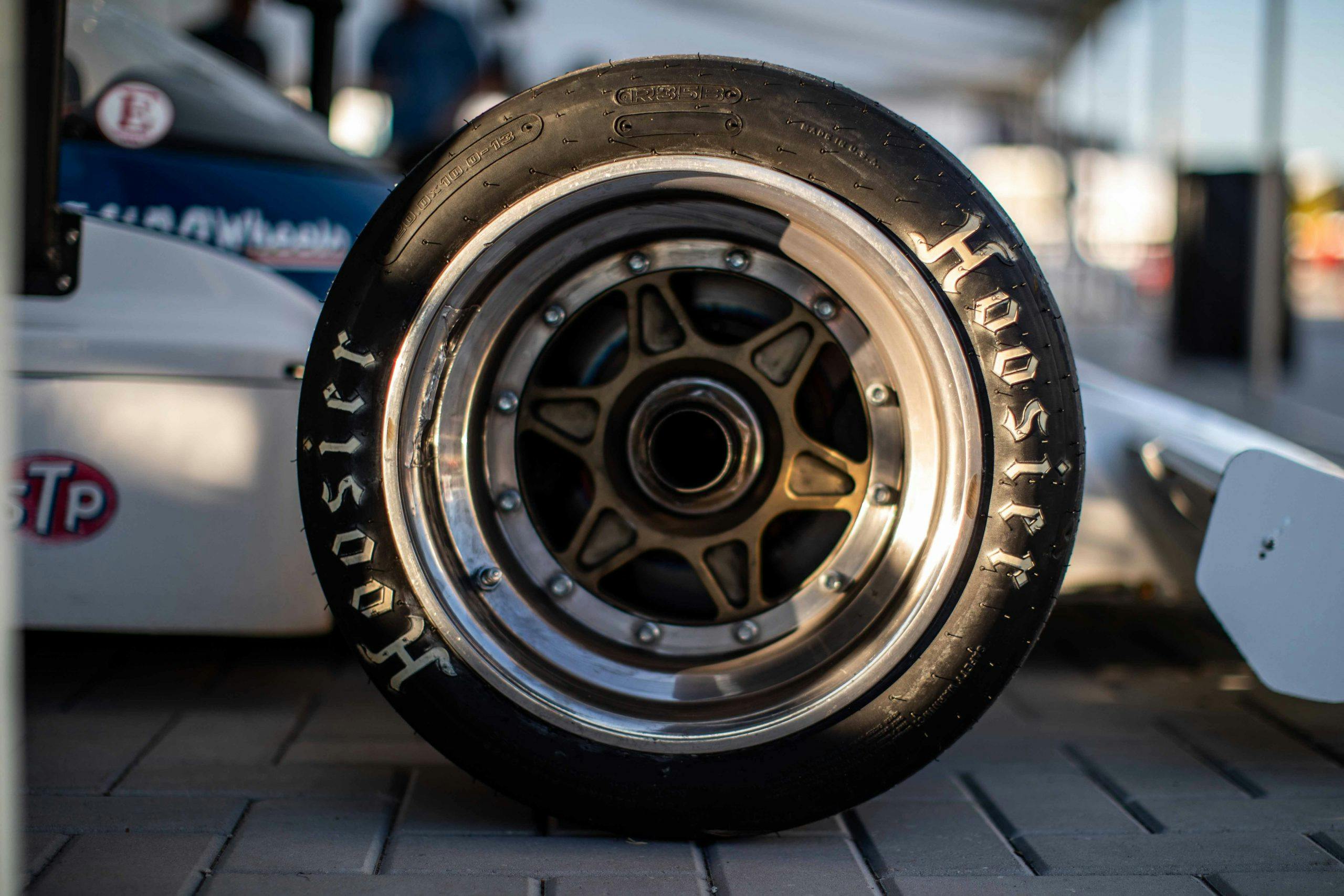10 pedigreed open-wheel racers at American Speed Festival 2021
It’s easy to say that the Chaparrals stole the show in Pontiac, Michigan, during the first-ever American Speed Festival. However, with all due respect to Jim Hall’s winged wonders, his “2” cars kept some mighty fine company under the tents of M1 Concourse the first weekend of October: 100 pedigreed cars spanning over 120 years of racing history, from a replica of Henry Ford’s first “race car” to a Porsche 917 and a ’90s F1 car. With such a select but prestigious group of vintage metal, we couldn’t choose between our favorite Indy cars and Formula 5000 contenders, so we decided to cast a wide net. Here are 10 of the most fabulous fenderless racers at American Speed Festival 2021, with one oddball bonus. Enjoy!
1984 Lola T8600
Sponsored by Domino’s Pizza through its entire tenure (’82-90) in CART, Doug Shierson Racing won the Indy 500 in 1990—and Cory Hoonhout was there to witness it. “No speed limits, no helmets in the pits,” he remembers, standing next to his red-white-and-blue Lola, once raced by Danny Sullivan in ’84. “After a guy got hit in Long Beach in ’91 they had [speed] limits—no helmets, though.” Before going back to school to be a small-animal veterinarian, Hoonhout drove a semi for Team Shierson and changed the outside rear (or inside rear, depending on the circuit) tire.
This particular car finished fourth in the ’86 CART season in the hands of Al Unser, Jr., and since receiving a careful restoration, it’s gotten its fair share of exercise thanks to Hoonhout and the vintage Indy car community. The Cosworth-DFX-powered maching has returned to the Brickyard for vintage events Indy three years running, with Hoonhout himself handling the Hewland five-speed in the narrow cockpit: I’ve hit 160, 170 [mph] in it at St. Louis,” he says.
1974 Riley

You won’t spot any photos of this ’74 Riley on M1’s Speed Ring—at least, not yet—because next to the nose of this handsome Indy car stood a sign reading “not quite finished.” Constructed by Chuck Looper for the ’74 racing season, this Offy-powered car was built for a winner—literally. Bob Riley, the same mind that dreamt up A.J. Foyt’s Coyotes, designed the tub and suspension to sit below the axle centerline, and decked out the racer with one of the series’ first examples of ground effects. Roger McCluskey, who won the 1973 USAC championship, drove this Riley as the English Leather Special in ’74 and again, with the car proclaiming itself the Silver Floss Sauerkraut Special the year following. In ’76, Mike Hiss attempted to qualify for the Indy 500 in this chassis but proved unsuccessful—though, thanks to the efforts of owner Pete Klain, this Riley’s racing days may be far from over.
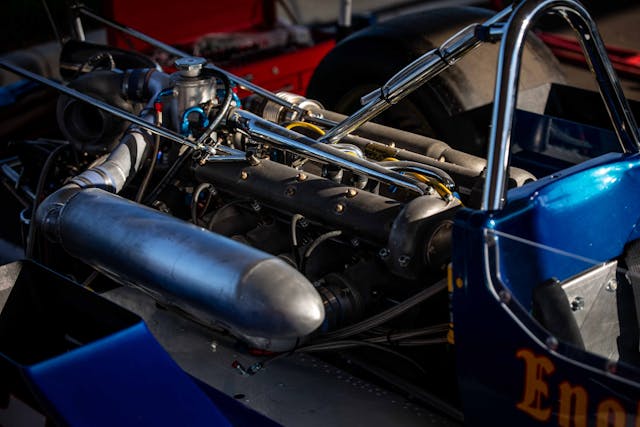
1970 Lola T192
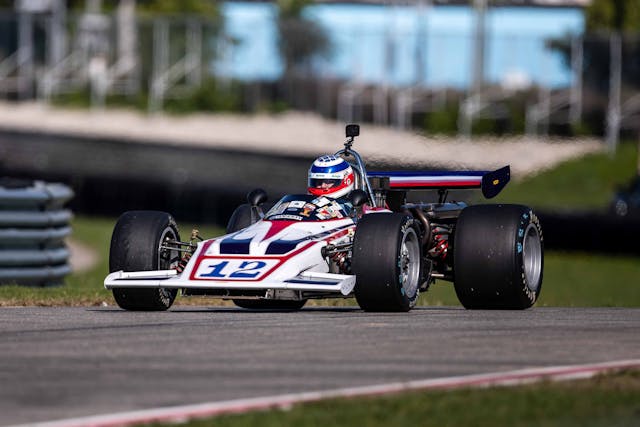
Lola was no stranger to success, but the T192 was something special even in its admirable resume. Designed by Eric Broadley and built in England, this Chevy-powered Formula 5000 racer was Lola’s first successful monocoque (rather than tube-frame) car. This Lola hunted the checkered flag for the first time in May of 1971 at the Seattle Grand Prix, wearing red, white, and blue and piloted by Jack Eitlejorg of Englewood, Colorado. Eitlejorg’s best finishes in this car occurred at Mid-Ohio (sixth) and Road America (eighth). Current owner Seb Cuppola keeps #12 in fine fettle, and today it boasts no less than three championship wins in the Formula 5000 Revival Race Series (2013, 2017, 2018).
1972 Parnelli VPJ-1
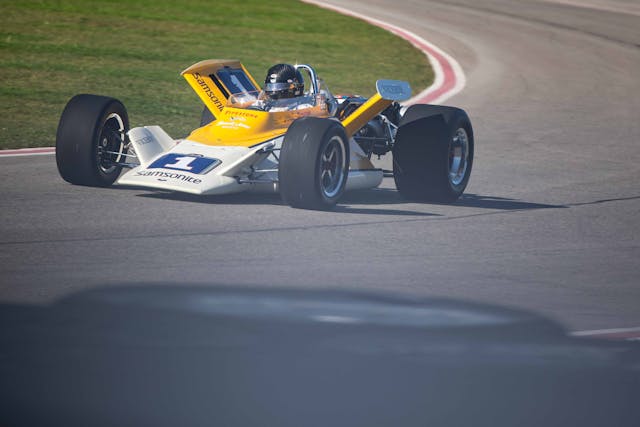
Marveling at those wild winglets? Take your time, because this is the only Parnelli VPJ-1 in private hands (the other three are in museums). Now, prepare yourself for a shock: This VPJ-1 nearly ended up in the dumpster.
Chuck Jones, the car’s owner and a long-time member of the Indy Museum’s board of directors, explains: “Racers are not sentimental people. They just want to get to the next race and be fast and all of that.” New season, new tech, new car. This particular car suffered a right front suspension failure during a 1972 tire test that caused it to surf a track wall in Phoenix, Arizona. In the eyes of Vel’s Parnelli Jones Racing, the 1200-hp racer had fulfilled its contractual obligations.
“It’s amazing it didn’t end up in the landfill,” Jones says. Thankfully a mechanic, besieged by sentiment, rescued the chassis under cover of night and hid it somewhere in a corner. By the time Jones discovered it in 2012, the mangled VPJ-1 was a massive project—but today, it’s worth every minute of the hassle. “It’s a hoot,” Jones says, grinning. Until his senior year at Purdue, he was a pro racer—three-quarter, then full midgets, and sprint cars. “It’s like a light switch, either on or off … it’s just 1970s tech. You have to have it pointed in the right direction.”
1979 Chaparral 2K
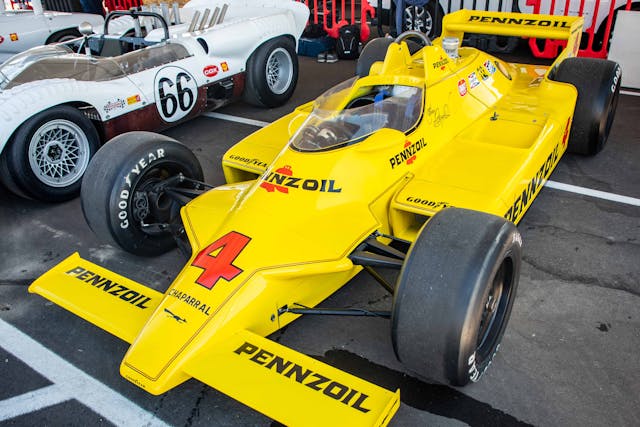
Better known as the “Yellow Submarine,” the Chaparral 2K was indeed a slippery fish—where the air was concerned. John Barnard designed the underbelly of the car with contours to suck the car to the track—the first example of an Indy car with ground effects integrated into its body from the get-go, rather than bolted onto the chassis after the fact. First driven by Al Unser during 1979, the Yellow Submarine is identified most closely with Johnny Rutherford, who piloted the car to his third Brickyard victory in 1980. After he took the flag, J.R. famously gave rookie Tim Richmond—who was stranded in his car due to a lack of fuel—a ride back to the pits, with Richmond perched on the Submarine’s sidepod.

1971 Lola T192
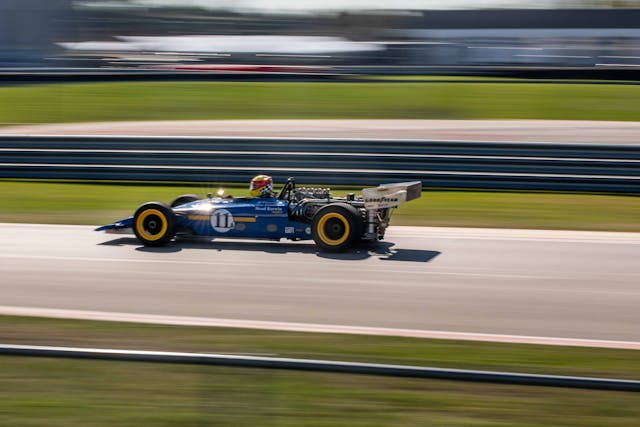
Ego and racing are inextricably linked—and they don’t honor the divides of racing series and regulatory bodies, either. Case in point: the Questor Grand Prix held at Ontario Speedway in California, a shoot-out of sorts between Formula 1 and Formula 5000 cars of the era. R.W. “Kas” Kastner—he of Team Nissan GTP fame—bought this Lola T192 from Chicago-area distributor Carl Hass, but before he managed to put an engine in the rolling chassis, Hass was back on the phone. Would Kastner loan Hass the car so that Al Unser could challenge the F5000 boys in California? On the condition that Hass supplied and installed the engine (and left it in the car when Unser was done with the race), Kastner said yes.
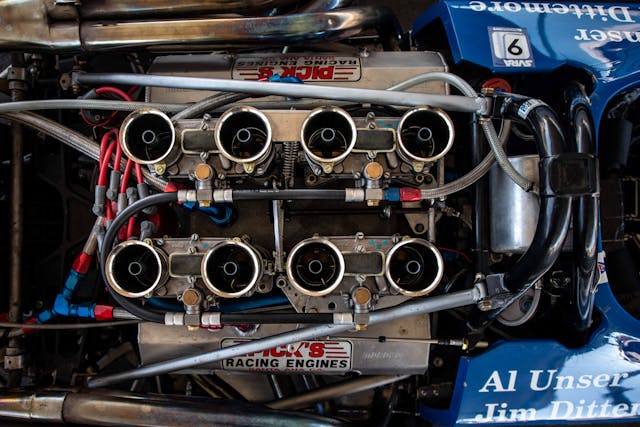
Unser didn’t perform very well at Ontario Speedway, but the 1400-pound, monocoque racer and its Weber-crowned Chevy 305 have earned its current owner, Mead Korwin, plenty of on-track grins. Leaning back in a folding camping chair, wearing Columbia boots and a denim short-sleeve shirt, Korwin pronounces it: “Remarkably forgiving. It really is. It’s all torque… It kinda grunts its way out of the corner, you don’t really have to rev it.
“Donohue called this model one of the best natural-handling race cars he ever drove.”
1992 Jordan 192
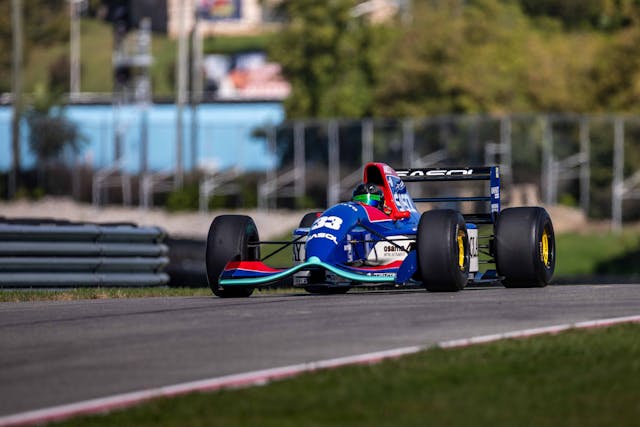
This Jordan 192 and its Cosworth powerplant are proof that racing isn’t all roses. After finishing a respectable fourth in Formula 1’s 1991 constructors championship, Jordan ran out of money to buy more engines from Ford and contracted with Yamaha for its OX99 V-12. The last-minute change proved disastrous for Jordan, who struggled with the Yamaha’s reliability all season and finished with only a single point in the constructor’s standings.
Recently acquired by RM Motorsports Inc, the 192 has since been modified to fit the previous Cosworth engine. The team at RM was working out the wrinkles in the engine tune this weekend, so it didn’t spend much time on track … but M1 has confirmed that next year’s event, headlined by Shelby, is a go. For now, the Jordan appears to be in good hands: “Looks like the car will need some more time on the dyno,” the shop writes. Perhaps the best is yet to come for this beleaguered beast?

1968 Lotus 56 turbine car
We all like our cars to embody our own histories and personalities, but few cars connect with their owner’s story in more ways than this Lotus 56 turbine car. Bruce Linsmeyer grew up in northern Indiana wrenching on his dad’s USAC sprint car and, as a teenager, it was only natural he’d be at the Brickyard each May—most importantly, in 1967.
That year, Parnelli Jones coasted a turbine-powered car to a heartbreaking sixth-place finish after leading 171 laps and becoming the first turbine car to successfully enter the event. The technology fascinated Linsmeyer, who years later—after wrenching stints on sprint car and IndyCar teams—began to dissect any turbine he could get his hands on. Today, his curiosity has paid off in spade: He established Avon Aero, a turbine company that supplies the marine, industrial, and aviation industries as well as the military sector. The business has provided him with the time and resources to bring a childhood Indy hero back to life: this ’68 Lotus turbine car, which he bought at auction in 1998. At the time, the ex-Joe Leonard racer had a four-cam Ford … but not for long. Linsmeyer bent his considerable knowledge and fabrication skills to the task, and a couple years later, the Lotus emerged under turbine power once more, courtesy of a power unit plucked from a Bell helicopter. “The engine was the easy bit,” Linsmeyer says. “Hooking it up to the rest of the car was a challenge.” He even had to build a new transfer gearbox for the four-wheel-drive machine.
“It’s rated for 1000 or so hours in the flight application before it needs a major service like an oil change,” Linsmeyer says. He walked to the back of the doorstop-shaped beast and removes a square panel, reaching inside to twist the cap off … a metal beer bottle? “In airplane applications, some excess fuel dumps on the ground, but me”—he walks with the container toward the front of the car—”I pour it back in the fuel tank.”
1969 Surtees TS5
In between photography shoots for the Harley Davidson parts and accessories catalog, Mark Harmer used to wheel a Caterham, but the same barebones, low-slung attitude that made it such a joy to drive made it a terror around street traffic. “It’s more dangerous than a motorcycle [on public roads], because you’re right at bumper height.” Then he stumbled upon the world of vintage racing. “I thought, this looks better than getting hit on the street!”
Wearing a weatherbeaten Team Surtees baseball cap and holding a giant green Stanley thermos, he shows off his ’69 TS-5, John Surtees’ first appearance on the Formula 5000 grid as a manufacturer. The handsomely restored tubeframe car spent time on both sides of the Atlantic in-period: in the U.K., with David Hobbs and Trevor Taylor in ’69 and, later, stateside with Andrew de Adamich. It was still racing, at the hands of Howie Fairbanks, until the late ’70s.
1972 All American Racers Eagle
If everything had gone according to plan, Mark Donohue wouldn’t have driven this Eagle in his last-ever Indy 500—he would have been behind the wheel of a McLaren. However, during a tire test held that March at Indy, Donohue discovered that his McLaren was trailing the flock of Gurney Eagles by 7 mph. He and Penske decided to talk to Gurney, who refused to sell them a ’73 car but agreed to provide a leftover ’72 car with some upgrades. Penske crew chief Karl Kainhofer drove eight days, from their shop in Pennsylvania to Gurney’s in California, with an Econoline van and a trailer to pick up the car—in parts, as was typical at the time. Kainhofer and Donohue built the Eagle on the floor of the Pennsylvania shop in just four weeks, with Donohue sleeping in the same building as he and wife Sue processed their divorce.
Owned by Rick and Alison Dresang, this ’72 Eagle tells an unusually bittersweet story—but, as researched and passed down by the Dresangs, the tale is a reminder of the less triumphant, less glamorous side of racing.
Fun fact: The wastegate of the TEO690 Garrett turbo mounted to the 159-cubic-inch four-cylinder uses a wastegate off a Caterpillar tractor.
Bonus: 1901 Ford “Sweepstakes” replica
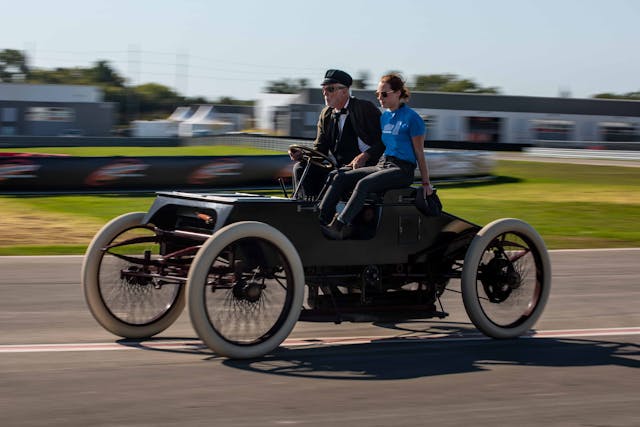
We know—it’s from 1901 (sort of), it doesn’t belong to any race series, and not in a million years would it hit triple digits. (Henry Ford claimed the original, of which this is a recreation, hit 72 mph, and the replica has notched almost 60.) But this painstakingly recreated Ford Speedster does not have fenders, so technically it does qualify as an open-wheel car.
On October 10, 1901, in Grosse Point, Michigan, Henry Ford and the original wood-paneled, 538-cubic-inch monster beat out Alexander Winton in a publicity stunt designed to restore Henry’s reputation after his first auto company folded. The sweepstakes worked, though not until his third effort would Ford’s venture take flight. Fun fact: those 538 cubic inches were distributed among only two cylinders. With a elementary form of mechanical fuel injection (for which Henry won a patent), the engine probably made around 26 hp.
That was Henry Ford’s first and only race. The original Speedster resides in the Henry Ford Museum, but to celebrate the 100th anniversary of the occasion, two replicas were made—at great cost and effort. This is the active-duty of the two replicas, and it has toured all over the world, making a magnificent chugging, clattering noise all the way—even to the Goodwood Festival of Speed.
